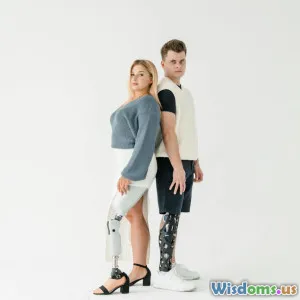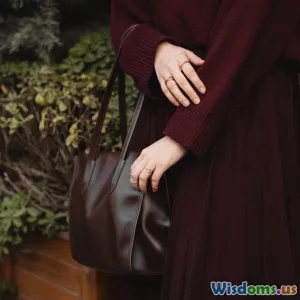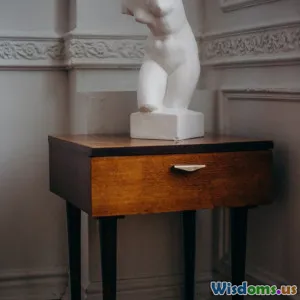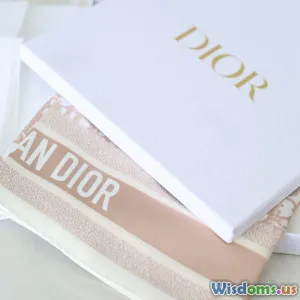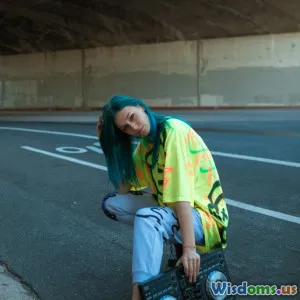Iconic Fashion Moments in Film
6 min read Explore the unforgettable fashion moments in film history that have shaped trends and defined characters. (0 Reviews)Iconic Fashion Moments in Film
Fashion and film have always gone hand in hand, with each influencing the other in profound ways. From the glamorous gowns of classic Hollywood to the avant-garde styles seen in modern cinema, fashion in film has the power to shape trends, define characters, and even inspire social movements. In this article, we will explore some of the most iconic fashion moments in film history, highlighting how these styles have left a lasting impact on both the industry and popular culture.
1. Audrey Hepburn in Breakfast at Tiffany's
There are few outfits as instantly recognizable as the little black dress worn by Audrey Hepburn in Breakfast at Tiffany's. Designed by Hubert de Givenchy, this elegant ensemble not only complimented Hepburn’s slender frame but also revolutionized the fashion industry, making the little black dress a staple in women’s wardrobes around the world. The film's opening scene, where Holly Golightly is seen sipping coffee in front of Tiffany & Co., encapsulates a sense of sophistication and style that has been emulated ever since.
2. Marilyn Monroe in The Seven Year Itch
Marilyn Monroe’s white dress blowing in the wind from a subway grate in The Seven Year Itch is one of the most iconic images in film history. The dress, designed by William Travilla, became a symbol of femininity and allure. Its playful design and the unforgettable scene solidified Monroe's status as a fashion icon, influencing countless designers and styles in the decades that followed.
3. The Costumes of The Great Gatsby
Baz Luhrmann's adaptation of The Great Gatsby brought the Roaring Twenties back to life, showcasing extravagant costumes that captured the spirit of the Jazz Age. Costume designer Catherine Martin created over 40 different outfits for the film, blending modern aesthetics with historical accuracy. The stunning flapper dresses, bejeweled headpieces, and tailored suits not only dazzled audiences but also sparked a revival of 1920s fashion in contemporary culture.
4. Cher Horowitz in Clueless
The fashion in Clueless, particularly the outfits worn by Alicia Silverstone as Cher Horowitz, became synonymous with 90s style. The film’s vibrant colors, bold patterns, and innovative layering have inspired a generation of fashion enthusiasts. Cher's iconic plaid skirt suit, designed by costume designer Mona May, embodies the playful yet polished aesthetic that defined the era, making it a reference point for modern fashionistas.
5. Lady Gaga in A Star is Born
In a more recent example, Lady Gaga’s fashion choices in A Star is Born showcased a blend of raw talent and style. Her character, Ally, evolves from a simple, understated look to glamorous red-carpet ensembles. Gaga's ability to use fashion as a form of self-expression resonated with audiences, reinforcing the idea that fashion can be a powerful tool for storytelling in film.
6. The Matrix's Neo and Trinity
The sleek black leather outfits worn by Keanu Reeves (Neo) and Carrie-Anne Moss (Trinity) in The Matrix not only became iconic for their futuristic aesthetic but also influenced the cyberpunk fashion movement. The film's costume designer, Kym Barrett, created looks that were both stylish and functional, setting a new standard for action film wardrobes and inspiring many high-fashion designers.
Conclusion
Iconic fashion moments in film serve not only as visual spectacles but also as powerful statements that can shape public perception and influence trends. From the timeless elegance of Audrey Hepburn to the bold statements made by modern stars like Lady Gaga, these moments are a testament to the enduring relationship between fashion and film. As we continue to watch new films, we can only anticipate what future cinematic fashion moments will emerge and how they will inspire the next generation of style enthusiasts.
By recognizing the impact of these iconic moments, we appreciate not just the artistry involved in costume design but also the cultural significance that fashion holds within the storytelling of film.
Rate the Post
User Reviews
Popular Posts
















